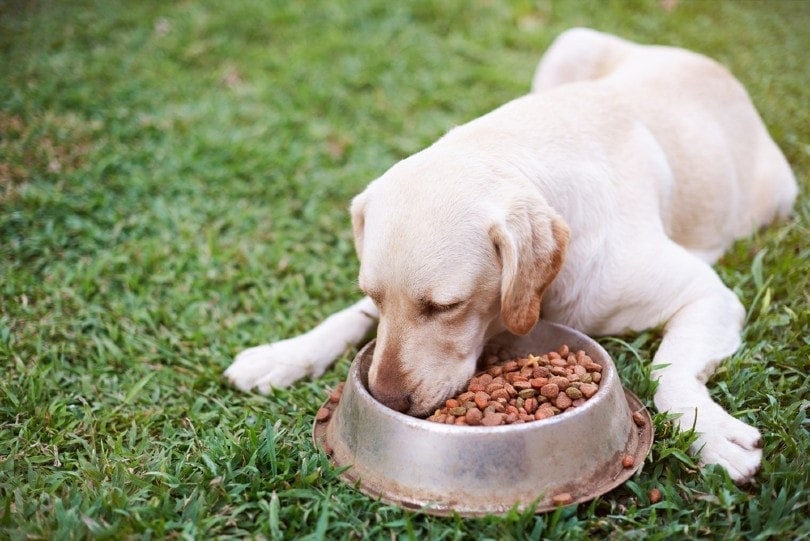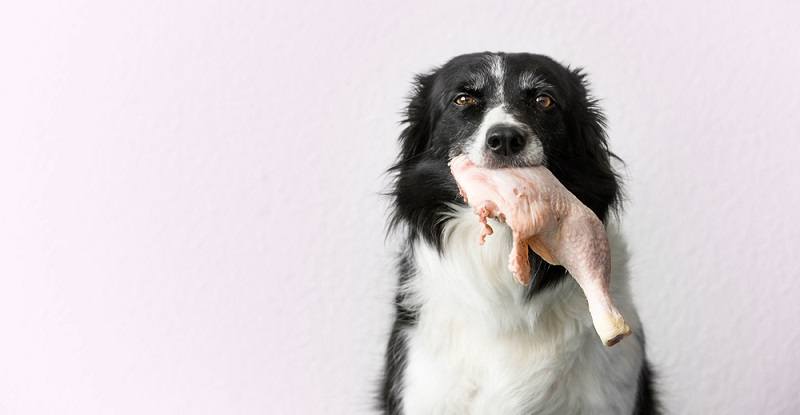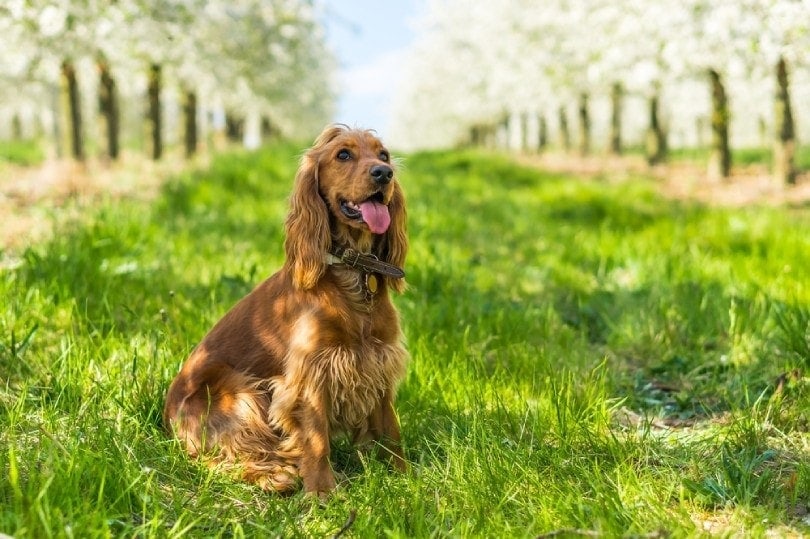Many people believe that dogs are complete carnivores, which makes sense, as they definitely seem to get more excited for a piece of steak or chicken than they do for broccoli or green beans.
The truth is that dogs are generally thought to be omnivores, but there’s new research that’s challenging that assumption.
This is a surprisingly complex debate that likely isn’t going to be resolved anytime soon, but it’s still worth diving into to understand both sides of the argument.
Are Dogs Omnivores?
The conventional wisdom holds that dogs are omnivores, which is why commercial dog foods are loaded with fruits, vegetables, and grains in addition to meat.
There are many important nutrients in fruits and veggies that dogs need, but that’s not usually why people argue that they’re omnivores.
Dog Evolution: Are Wolves Omnivores?

Many people claim that since dogs are descended from wolves and wolves have been observed eating grains or chomping on undigested plant matter found in the stomachs of their victims, dogs must eat plants as well.
There are a few issues with this argument, however.
Perhaps the biggest is that we no longer believe domesticated dogs to be descended from wolves — or at least, they’re not descended from modern wolves, anyway. Instead, it’s thought that both dogs and modern wolves share a common ancestor: a different, long-extinct species of wolf.
Since no one has ever seen these extinct wolves, we have no idea what they ate, and the diet of modern wolves is irrelevant to the discussion.
Even if the diet of modern wolves was relevant, though, it wouldn’t help the omnivore argument, as wolf experts now believe the animals to be completely carnivorous.
Dog Intestinal Size
Meat is easier to digest than plants are, so the intestinal length of obligate carnivores is usually much shorter than that of herbivores or omnivores. Cats, for example, have very short digestive tracts.
Dogs have medium-sized digestive tracts: longer than cats and other obligate carnivores, but shorter than many other herbivores and omnivores.
But new research may have undermined this point. While dogs have longer intestinal tracts than cats, a cat’s is wider, giving them roughly the same total volume.
Dog Evolutionary Adaptation
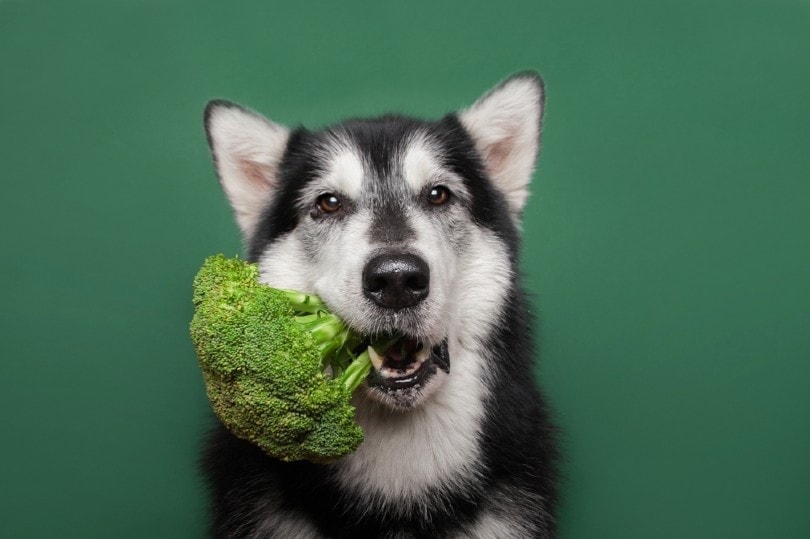
This is probably the strongest argument in favor of dogs being omnivores. Dogs have three separate genes that are specifically designed for starch and glucose digestion. Why would they have those if they weren’t supposed to eat starch and glucose?
It’s important to note that wolves and other undomesticated canine relatives do not have these genes; it’s thought that dogs developed them from scavenging in and around human settlements thousands of years ago.
However, while this adaptation proves that dogs can eat plants and grains, it doesn’t exactly prove that they should. It just means their bodies are capable of processing such foods; generally speaking, developing a handful of genes isn’t considered sufficient to change a species’ entire digestive evolution.
Being Omnivorous Is Better for Business

This is less of an argument for dogs being omnivores and more of a possible explanation for why so many people believe that they need plants and grains in their diets.
Simply put, meat is expensive — much more expensive than, say, corn, wheat, oats, or broccoli. Big dog food manufacturers want to keep their costs low as much as possible, so the more meat that they can replace with things like starches, the more they’ll save in the long run.
It’s in these companies’ best interests, then, to argue that dogs need all these foods that the companies desperately want to put in their products.
The fact that these companies have a conflict of interest doesn’t disprove the fact that dogs are omnivores, of course. However, it is worth noting that much of the “science” behind a dog’s dietary needs is backed by large corporations, and they may have their own interests at heart, rather than your pups.
One thing is in their favor, though: Putting meat in dog food is generally terrible for the environment. In fact, owning a medium-sized dog could be comparable to owning a large SUV in terms of carbon footprint. If dogs can go vegetarian even a bit more than they normally do, it would be a big win for the planet.
Are Dogs Carnivores?
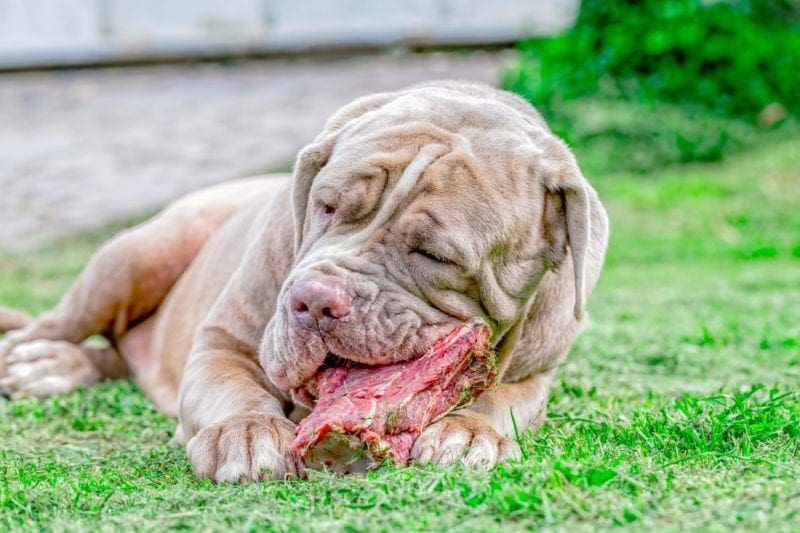
While no one disputes the fact that dogs are largely meat eaters or the fact that they seem to prefer meat to other food sources, it’s only been fairly recently that some experts have argued that they might be obligate carnivores, just like cats.
As such, while some of these arguments are quite old, others are brand-new, so they haven’t had as much time to be thoroughly examined or debunked. It’s important, then, not to mistake a lack of counterarguments as any sort of definitive proof.
Dog Teeth
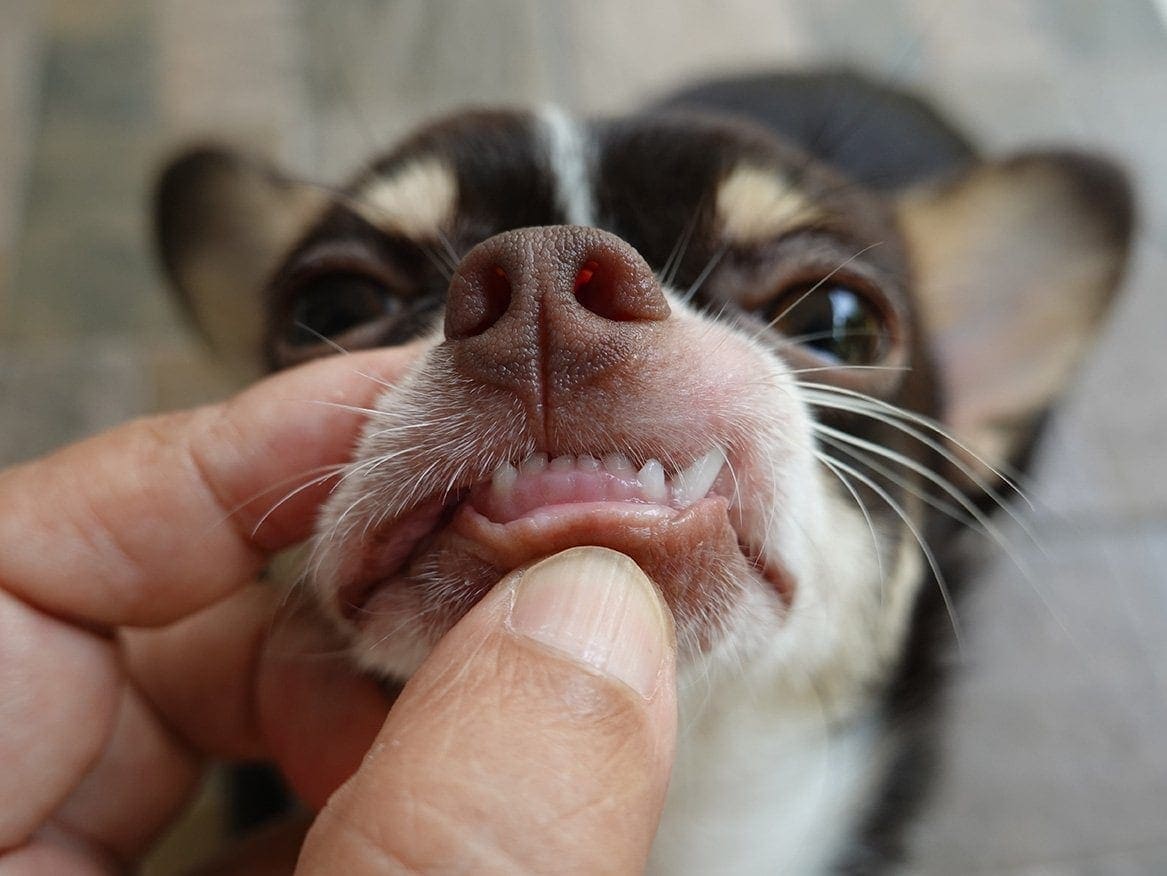
One of the easiest ways to tell a carnivore from an herbivore or omnivore is to look at the animal’s teeth. Herbivores have rows of flat molars, perfect for grinding up grains, grasses, and other plants.
Carnivores, on the other hand, tend to have sharp teeth instead of molars. These are designed for killing other animals and then ripping their flesh off before swallowing it whole rather than chewing.
As you might expect, omnivores — like humans — have a mixture of both.
So, what kind of teeth do dogs have? They have rows of sharp teeth, perfect for dicing meat into manageable chunks.
That doesn’t mean they can’t eat plants, which is something that any dog owner who’s observed their pet eating grass can attest. However, if you’ve seen the grass come out the other end mostly intact, you know that the digestive process wasn’t exactly smooth.
The Coefficient of Fermentation
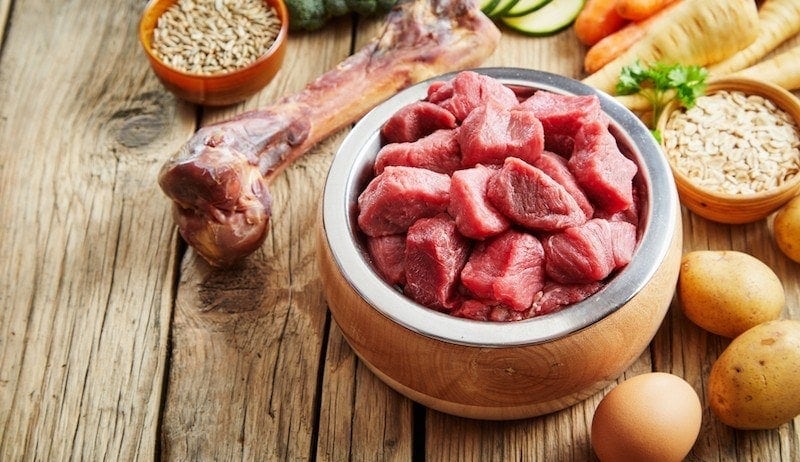
This argument came about in relation to the one about intestinal length. Some scientists have argued that a more important factor to consider in determining an animal’s ideal diet is their coefficient of fermentation.
A big reason that herbivores can survive on plant-based diets is their ability to extract nutrition from those plants by fermenting them inside their guts; these animals are said to have high coefficients of fermentation.
Dogs, on the other hand, have a low coefficient of fermentation that’s similar to cats, and cats are obligate carnivores.
Of course, this doesn’t prove that dogs can’t eat plants, but it suggests that they may not be able to wring all the nutrition out of non-meat sources.
Salivary Amylase
Most herbivores and omnivores create a specialized enzyme in their saliva called “amylase.” Since starchy foods are so difficult to digest, the process starts in the mouth, long before such foods reach the gut, and amylase in the saliva is responsible for breaking them down while they’re still being chewed.
However, dogs — like cats — don’t produce amylase in their saliva. They do make it in their pancreas, which is why these foods can be digested inside their gut, but the process doesn’t start as early as it would in a true omnivore and is therefore likely to be less efficient.
What’s more, dogs have a much higher concentration of stomach acid than most herbivores or omnivores do. This suggests their stomachs are geared toward breaking down animal proteins as quickly as possible.
Dog Omega-3 Conversion
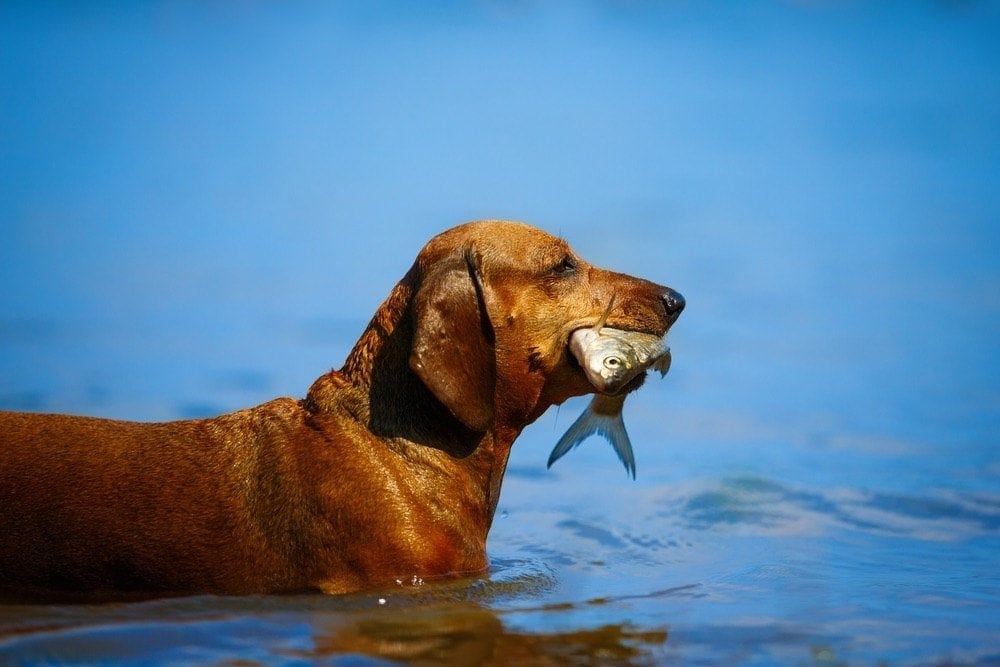
Omega-3 fatty acids are extremely important for any animal’s health; in dogs, they do everything from support brain and eye development to ward off arthritis and kidney disease.
There are two ways to get omega-3s: You can get them from plants like flaxseed and chia or from animal sources like fish.
The vegetable-based omega-3s come in the form of alpha-linolenic acid, or ALA. However, for dogs to use it, they must first convert it to eicosatetraenoic acid or docosahexaenoic acid.
Most carnivores, like cats, are unable to make this conversion at all. Dogs can do it, but they can only convert about 5 to 15% of the ALA that they consume. As a result, they get much more nutrition from meat-based sources of omega-3s.
Dog Eating Routines
There are a variety of innate behaviors that dogs display that hew closer to carnivores than omnivores or herbivores.
One of these is the length of time that they can go without eating. Herbivores and omnivores typically eat frequently — several times a day, if possible. This is why animals like cows will graze constantly.
Carnivores, on the other hand, can go quite a long time between meals. After all, prey can be hard to come by, so the animal needs to be able to survive lean times. For their part, dogs can survive for as long as 100 days without food (although, of course, we wouldn’t recommend it).
Dogs also have quite a bit of flexibility inside their metabolic pathways. This is usually found in carnivores, as it helps them survive a “feast or famine” lifestyle.
Dogs will display other behavioral traits that are common in carnivores, like digging holes (for burying carcasses to hide them from scavengers) or learning to pounce while puppies (which is presumably for sneaking up on another animal, not a corn stalk).
Are Dogs Carnivores or Omnivores?
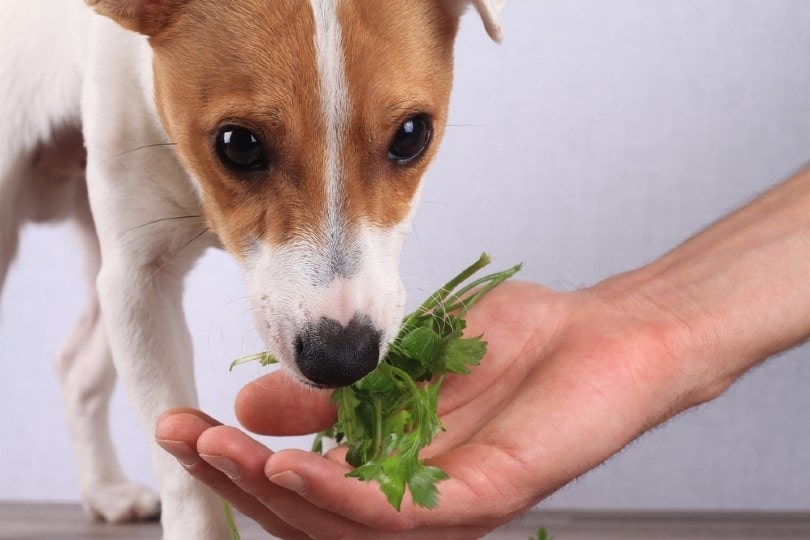
This debate is far from over. However, the bulk of the evidence that we currently have available to us suggests that dogs are something called “facultative carnivores.”
Unlike obligate carnivores, who only eat meat, facultative carnivores mostly eat meat but will eat other things if they need to.
You may now be asking yourself, “So, what’s the difference between a facultative carnivore and an omnivore?” That’s an excellent question — one that science doesn’t have a great answer for.
There’s not a clear line between the two, biologically speaking. It’s generally a judgment call based on which foods the animal seems to prefer to eat, as well as which ones are more nutritious for them.
What Does This Mean for My Dog’s Diet?
There is so much debate about what would constitute an ideal dog diet that it’s hard to give any definitive answers here. However, we would say that if you can afford it, you should feed your dog as much lean meat as possible.
That includes meat from a variety of sources, including organ meat, bone meal, and more. Dogs love all that stuff and their bodies thrive from eating it.
Your dog can still be extremely happy and healthy with fruits and veggies in their diet, though. Indeed, many such foods are quite healthy for them, but you need to realize that your dog might not digest them as efficiently as they do meat.
If you’re feeding your dog a raw diet, it should consist mainly of meat rather than other foods. However, you should talk to your vet first, just to make sure you’re not accidentally depriving your pup of something essential.
At the end of the day, dogs can thrive on a variety of diets. As long as your pooch is eating well and the vet says that they’re healthy, we wouldn’t worry too much about the ratio of meat to plants in their diet.
Conclusion: Are Dogs Carnivores or Omnivores?
While we might not have a satisfactory answer to the “omnivore vs. carnivore” debate just yet, the good news is that most dogs aren’t terribly picky. They’ll happily eat whatever you put in front of them (or leave them unattended on the counter).
That doesn’t mean that you shouldn’t worry about what you feed your pooch, of course. However, as long as you do your research and try to give your dog the most nutritious food possible, you’re unlikely to go too wrong, regardless of which side you fall on in this argument.
Featured Image Credit: PixieMe, Shutterstock
